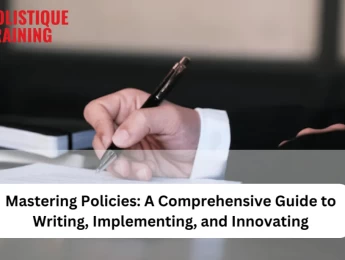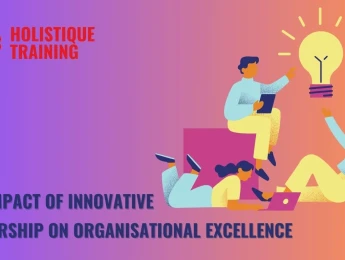Introduction
Policies serve as guiding principles that steer organizations towards their objectives while ensuring compliance and accountability. From defining roles and responsibilities to outlining procedures and standards, policies play a vital role in shaping organizational culture and operations. In this comprehensive guide, we delve into the intricacies of policy writing and management, exploring key components, best practices, common pitfalls to avoid, and future trends shaping the landscape of policy development and implementation. Whether you're a seasoned policy writer or just starting, this article aims to equip you with the knowledge and tools necessary to navigate the world of policies effectively. Let's dive in!
What Are Policies and Why Are They Important?
Policies are guidelines or rules established by organizations or institutions to govern their operations, procedures, and behaviors. They are important because they provide clarity, consistency, and direction in decision-making, ensure compliance with laws and regulations, promote accountability and transparency, and contribute to a positive organizational culture.
Who Should Be Involved in Policy Writing?
Several key stakeholders should be involved in policy writing to ensure comprehensive coverage and effective implementation:
- Leadership and Management: Executives, directors, and managers provide strategic direction and input based on organizational goals and objectives.
- Subject Matter Experts: Individuals with expertise in the specific area covered by the policy offer insights, best practices, and technical knowledge.
- Legal and Compliance Teams: Legal advisors and compliance officers ensure that policies align with applicable laws, regulations, and industry standards.
- Human Resources (HR) Professionals: HR personnel contribute by considering the impact of policies on employees, addressing workforce-related issues, and promoting fairness and equity.
- Employees and Stakeholders: Gathering input and feedback from employees and relevant stakeholders ensures that policies reflect diverse perspectives and are practical and realistic.
- Communication and Training Specialists: Professionals in communication and training assist in crafting clear, accessible policies and developing training programs to ensure understanding and compliance.
- Review and Approval Committees: Establishing committees or review boards comprising representatives from different departments ensures thorough evaluation, revision, and approval of policies.
By involving these stakeholders, organizations can create well-rounded policies that consider legal requirements, operational realities, employee perspectives, and organizational goals.
What are the Key Components of a Well-Written Policy?
A well-written policy typically includes the following key components:
- Title: Clearly states the subject or purpose of the policy.
- Purpose/Objective: Defines the goal or intention of the policy and why it is necessary.
- Scope: Specifies to whom or what the policy applies and any limitations or boundaries.
- Definitions: Clarifies terms or concepts used in the policy that may be ambiguous or subject to interpretation.
- Policy Statement: Clearly articulates the rules, standards, or guidelines that the policy establishes.
- Responsibilities: Outlines the roles and responsibilities of individuals or departments related to the policy.
- Procedures: Describes the steps or actions to be followed to comply with the policy.
- Exceptions/Waivers: Specifies any circumstances under which the policy may be waived or exceptions may be granted.
- Compliance and Enforcement: Explains how compliance with the policy will be monitored, evaluated, and enforced, including consequences for non-compliance.
- Revision History: Documents any revisions, updates, or changes made to the policy over time.
- References: Includes references to relevant laws, regulations, standards, or other policies that inform or support the policy.
- Effective Date: Indicates when the policy becomes effective and when it may be subject to review or renewal.
By including these components, a well-written policy becomes clear, comprehensive, and actionable, promoting consistency and accountability within an organization.
How to Conduct Research for Policy Writing?
Conducting research for policy writing involves several key steps to gather relevant information, data, and insights. Here's a guide on how to conduct research effectively:
- Define Objectives: Clearly define the objectives and goals of the policy to understand what information is needed.
- Identify Stakeholders: Identify stakeholders, experts, and relevant departments or organizations that can provide valuable insights and data.
- Review Existing Policies: Examine existing policies, laws, regulations, and industry standards related to the topic to ensure alignment and avoid redundancy.
- Conduct Literature Review: Review academic journals, research papers, reports, and case studies relevant to the policy area to gather evidence-based information and best practices.
- Collect Data: Gather quantitative and qualitative data through surveys, interviews, focus groups, observations, or data analysis to understand current practices, challenges, and trends.
- Consult Subject Matter Experts: Consult with subject matter experts within and outside the organization to gain specialized knowledge, insights, and recommendations.
- Consider Stakeholder Feedback: Solicit feedback and input from stakeholders, including employees, community members, advocacy groups, and industry stakeholders, to incorporate diverse perspectives.
- Analyze Data: Analyze collected data to identify patterns, trends, gaps, and areas for improvement that can inform policy development.
- Assess Impact: Assess the potential impact of the proposed policy on various stakeholders, operations, resources, and compliance requirements.
- Legal and Ethical Considerations: Consider legal and ethical implications, risks, and compliance requirements associated with the policy to ensure legality and ethicality.
- Document Findings: Document research findings, data sources, methodologies, and analysis processes to maintain transparency, credibility, and accountability.
- Validate Findings: Validate research findings and recommendations through peer review, expert validation, pilot testing, or simulations to ensure accuracy and reliability.
Table 1:steps for conducting research for policy writing
Step | Description |
Define Objectives | Clearly define policy objectives and goals to identify necessary information. |
Identify Stakeholders | Identify stakeholders, experts, and relevant organizations for insights and data. |
Review Existing Policies | Examine related policies, laws, regulations, and industry standards for alignment and uniqueness. |
Conduct Literature Review | Review academic sources for evidence-based information and best practices. |
Collect Data | Gather quantitative and qualitative data through surveys, interviews, and analysis. |
Consult Subject Matter Experts | Gain specialized knowledge and insights from experts within and outside the organization. |
Consider Stakeholder Feedback | Solicit feedback from stakeholders to incorporate diverse perspectives into policy development. |
Analyze Data | Identify patterns, trends, gaps, and areas for improvement based on collected data. |
Assess Impact | Evaluate potential policy impact on stakeholders, operations, resources, and compliance. |
Legal and Ethical Considerations | Consider legal and ethical implications to ensure policy legality and ethicality. |
Document Findings | Maintain transparent documentation of research findings, methodologies, and sources. |
Validate Findings | Validate research findings through peer review, expert validation, or pilot testing. |
By following these steps, policymakers can gather comprehensive and reliable information to inform evidence-based policy development, enhance decision-making, and promote effective implementation.
What Are the Best Practices for Implementing Policies?
Implementing policies effectively requires adherence to best practices to ensure successful adoption, compliance, and impact. Here are some key best practices for implementing policies:
- Clear Communication: Clearly communicate policies to all stakeholders, including employees, managers, and relevant parties, using accessible language and multiple communication channels.
- Training and Education: Provide comprehensive training and educational programs to ensure understanding of policies, procedures, roles, responsibilities, and expectations.
- Engage Stakeholders: Involve stakeholders in the implementation process by seeking feedback, addressing concerns, and fostering collaboration to promote buy-in and ownership.
- Ensure Accessibility: Make policies easily accessible and available in multiple formats (e.g., online, printed) to ensure visibility, understanding, and referenceability.
- Monitor and Evaluate: Establish monitoring mechanisms to track compliance, effectiveness, and impact of policies, and regularly evaluate outcomes to identify areas for improvement.
- Feedback Mechanisms: Implement feedback mechanisms, such as surveys, suggestion boxes, or feedback sessions, to gather input, address issues, and make necessary adjustments.
- Enforcement Consistency: Apply policies consistently and fairly across all individuals and departments, avoiding exceptions or selective enforcement that may undermine credibility and compliance.
- Provide Resources: Allocate necessary resources, including staff, technology, funding, and support services, to facilitate policy implementation and address implementation challenges.
- Adaptability: Remain flexible and adaptable to changing needs, circumstances, and feedback, and be open to revising policies as necessary to improve effectiveness and relevance.
- Leadership Support: Obtain strong leadership support and commitment from executives, managers, and key decision-makers to demonstrate organizational commitment, reinforce accountability, and encourage compliance.
- Risk Management: Identify and address potential risks, barriers, and unintended consequences associated with policy implementation to mitigate negative impacts and ensure smooth execution.
- Continuous Improvement: Foster a culture of continuous improvement by seeking feedback, conducting periodic reviews, learning from experiences, and making iterative enhancements to policies and implementation processes.
By following these best practices, organizations can enhance the effectiveness, acceptance, and impact of policies, leading to improved compliance, operational efficiency, and organizational performance.
What Tools and Resources Can Aid in Policy Writing?
Several tools and resources can aid in policy writing to streamline the process, ensure quality, and promote effectiveness. Here are some examples:
- Policy Templates: Utilize pre-designed policy templates or frameworks that provide a structured format, key sections, and guidance on content to expedite policy creation.
- Policy Management Software: Use policy management software platforms that offer features such as document creation, version control, collaboration, approval workflows, and tracking of policy updates.
- Document Collaboration Tools: Employ collaborative tools like Google Docs, Microsoft Word with track changes, or cloud-based platforms (e.g., SharePoint, Dropbox) for real-time collaboration, editing, and feedback from multiple stakeholders.
- Regulatory Compliance Databases: Access regulatory compliance databases or online resources (e.g., government websites, industry associations) to stay updated on relevant laws, regulations, standards, and compliance requirements.
- Research Databases: Use research databases (e.g., academic journals, industry publications) and online libraries to gather evidence-based information, best practices, case studies, and relevant data for policy development.
- Survey and Feedback Tools: Employ survey and feedback tools (e.g., SurveyMonkey, Google Forms) to collect input, opinions, and feedback from stakeholders, employees, and subject matter experts during the policy drafting process.
- Policy Review and Approval Systems: Implement systems or workflows for policy review, approval, and dissemination, such as electronic signature platforms ordocument management systems with approval tracking.
- Training and Education Resources: Access training materials, online courses, webinars, and educational resources on policy writing, compliance, and related topics to enhance skills and knowledge among policy writers and reviewers.
- Legal and Compliance Consultation: Seek guidance and support from legal advisors, compliance officers, or regulatory experts to ensure policies align with legal requirements, mitigate risks, and comply with industry standards.
- Style Guides and Writing Tools: Refer to style guides (e.g., APA, Chicago Manual of Style) for formatting guidelines, clarity, and consistency in writing, and use grammar and editing tools (e.g., Grammarly, Hemingway Editor) for proofreading and editing assistance.
- Policy Libraries: Explore existing policy libraries or repositories within organizations, government agencies, or professional associations to review and reference relevant policies, templates, and best practices.
- Feedback and Evaluation Surveys: Implement feedback and evaluation surveys or mechanisms to gather post-implementation feedback, assess policy effectiveness, identify areas for improvement, and make data-driven revisions.
By leveraging these tools and resources, policy writers can streamline the policy writing process, enhance quality and compliance, facilitate collaboration, and promote effective policy implementation within organizations.
Common Mistakes to Avoid in Policy Writing
Avoiding common mistakes in policy writing is crucial to ensure clarity, effectiveness, and compliance. Here are some common mistakes to avoid:
- Using Complex Language: Avoid using overly complex or technical language that may confuse readers. Use clear, concise, and straightforward language to enhance understanding.
- Lack of Clarity in Objectives: Clearly define the purpose, objectives, and scope of the policy to avoid ambiguity and ensure alignment with organizational goals.
- Ignoring Stakeholder Input: Failure to seek input and feedback from relevant stakeholders can result in policies that do not consider diverse perspectives, needs, and potential impacts.
- Inconsistent Formatting: Maintain consistent formatting, style, and structure throughout the policy document to enhance readability and professionalism.
- Omitting Definitions: Include definitions of key terms, acronyms, and concepts to prevent misunderstandings and ensure consistent interpretation.
- Not Addressing Implementation: Consider implementation challenges, resource requirements, training needs, and enforcement mechanisms during policy development to facilitate successful implementation.
- Overly Prescriptive Language: Avoid overly prescriptive language that restricts flexibility or creativity. Balance specificity with flexibility to allow for practical application and adaptation.
- Failure to Consider Legal Compliance: Ensure policies comply with relevant laws, regulations, industry standards, and internal policies to mitigate legal risks and ensure legality.
- Lack of Review and Revision: Failure to conduct thorough reviews, updates, and revisions of policies over time can lead to outdated or ineffective policies.
- Inadequate Communication: Communicate policies effectively to all stakeholders, including employees, managers, and relevant parties, using multiple channels and providing necessary training and guidance.
- Ignoring Feedback and Evaluation: Regularly gather feedback, conduct evaluations, and assess policy effectiveness to identify areas for improvement and make necessary adjustments.
- Incomplete Documentation: Document all policy development processes, revisions, approvals, and changes to maintain transparency, accountability, and a clear revision history.
By avoiding these common mistakes, policy writers can create policies that are clear, effective, compliant, and conducive to successful implementation and organizational alignment.
Future Trends in Policy Writing and Management
Several trends are shaping the future of policy writing and management, driven by technological advancements, changing regulatory landscapes, and evolving organizational needs. Here are some key future trends:
- Digital Transformation: Embracing digital tools and platforms for policy creation, management, and dissemination, such as cloud-based policy management software, AI-powered analytics, and automated workflows for approval and tracking.
- Data-Driven Decision Making: Leveraging data analytics, machine learning, and predictive modeling to gather insights, assess policy impact, and inform evidence-based policy development and decision-making.
- Agile Policy Development: Adopting agile methodologies and iterative approaches in policy development, allowing for flexibility, rapid prototyping, continuous feedback, and adaptation to changing needs and circumstances.
- Dynamic Compliance Monitoring: Implementing real-time monitoring systems, AI-driven compliance checks, and automated audits to ensure ongoing compliance with regulations, standards, and internal policies.
- Privacy and Data Security Policies: Developing robust policies and protocols to address emerging challenges in data privacy, cybersecurity, and digital ethics, considering regulatory frameworks like GDPR and CCPA.
- Remote Work Policies: Creating and updating policies related to remote work, flexible scheduling, telecommuting, and digital collaboration tools to accommodate hybrid work models and promote productivity, well-being, and work-life balance.
- Environmental and Sustainability Policies: Integrating environmental sustainability goals, climate change mitigation strategies, and ESG (Environmental, Social, Governance) considerations into organizational policies, reflecting a growing focus on corporate responsibility and sustainability.
- Inclusivity and Diversity Policies: Enhancing inclusivity, diversity, equity, and belonging through policies that promote fair hiring practices, diverse representation, inclusive workplace cultures, and anti-discrimination measures.
- Social Media and Online Presence Policies: Addressing challenges and opportunities related to social media use, online reputation management, digital communication etiquette, and cybersecurity risks in organizational policies.
- Globalization and International Policies: Developing policies that navigate complex global markets, cross-border regulations, cultural diversity, geopolitical risks, and international trade agreements, ensuring compliance and ethical business practices.
- Collaborative Governance: Fostering collaborative governance models that involve multi-stakeholder partnerships, public-private collaborations, civil society engagement, and participatory decision-making in policy development and implementation.
- Ethical AI and Technology Policies: Establishing ethical guidelines, responsible AI frameworks, and technology governance policies to address ethical considerations, biases, transparency, accountability, and social impact of emerging technologies.
Table 2:The future trends in policy writing and management
Trend | Description |
Digital Transformation | Embracing digital tools and platforms for policy creation, management, and dissemination, including AI-powered analytics. |
Data-Driven Decision Making | Leveraging data analytics, machine learning, and predictive modeling to inform evidence-based policy development. |
Agile Policy Development | Adopting agile methodologies and iterative approaches for flexibility, rapid prototyping, and continuous feedback. |
Dynamic Compliance Monitoring | Implementing real-time monitoring systems, AI-driven compliance checks, and automated audits for ongoing compliance. |
Privacy and Data Security Policies | Developing robust policies and protocols to address data privacy, cybersecurity, and digital ethics, following regulatory frameworks. |
Remote Work Policies | Creating policies to accommodate remote work, flexible scheduling, telecommuting, and digital collaboration tools. |
Environmental and Sustainability Policies | Integrating goals for environmental sustainability, climate change mitigation, and ESG considerations into policies. |
Inclusivity and Diversity Policies | Enhancing policies to promote fair hiring, diverse representation, inclusive workplace cultures, and anti-discrimination measures. |
Social Media and Online Presence Policies | Addressing challenges related to social media, online reputation, digital communication etiquette, and cybersecurity risks. |
Globalization and International Policies | Developing policies for global markets, cross-border regulations, cultural diversity, geopolitical risks, and trade agreements. |
Collaborative Governance | Fostering multi-stakeholder partnerships, public-private collaborations, civil society engagement, and participatory decision-making. |
Ethical AI and Technology Policies | Establishing ethical guidelines, responsible AI frameworks, and technology governance policies for emerging technologies. |
These trends reflect the evolving landscape of policy writing and management, emphasizing agility, innovation, inclusivity, sustainability, and ethical considerations in addressing complex challenges and opportunities in today's dynamic environments.
Conclusion
In conclusion, effective policy practices are essential for organizations to navigate complexities, ensure compliance, and drive positive change. By embracing best practices, leveraging technology, and fostering collaboration, policies can become powerful tools for promoting transparency, accountability, and strategic alignment. As we look to the future, adapting to emerging trends and staying agile will be key to crafting policies that meet evolving needs and challenges.

























